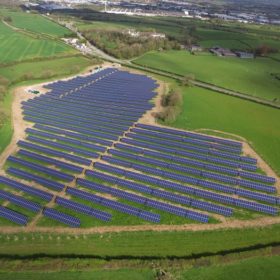Schmid promotes PERT over PERC
German PV equipment supplier Schmid is promoting its PERT technology as resulting in significantly reduced light-induced degradation than occurs in PERC multicrystalline cells. PERT refers to Passivated Emitter Rear Totally Diffused (PERT) technology that Schmid can achieve with its Atmospheric Pressure Chemical Vapor Deposition (APCVD) tooling.
Australia: Study finds PV can supply more than 60% of electricity demand in Alice Springs
A study released today has found that solar can supply more than 60% of electricity demand in the remote town of Alice Springs and the grid remain stable. The study concludes that an additional 10 MW of PV can be added to the towns grid, although advises it be spread over nine 1.1 MW arrays to reduce the potentially destabilizing affect of variable cloud cover.
UK: The smart home in focus as startups drive innovation
The concept of the smart home is emerging as a hot topic in the debate regarding the U.K.’s energy future. At the EcoBuild last week, a special session entitled “Smart and Efficient Use of Future Energy” depicted accurately the central role solar PV plays in the transition to the smart era. It also highlighted how innovation leadership is coming from small, bottom-up firms as utilities and policy-makers struggle to adapt and embrace the new technologies.
Singulus books 'high performance' cell tool order
German PV production equipment supplier Singulus has booked a “substantial” order for process machines for the production of “high performance” solar cells. The order, in the “double digit of millions,” brings Singulus’ solar bookings in Q1 to more than $54 million.
Oxford PV raises over US$12 million to commercialize perovskites
UK-based perovskite technology developer Oxford PV has closed an £8 million (US$12.15 million) first-tranche B equity round to continue to develop its solar perovskite technology. The round doubles the amount of equity investment Oxford PV has raised to date.
1366 Tech partners with Hanwha Q Cells in wafer launch
This latest generation of the company’s kerfless wafer production machinery, which avoids feedstock waste by forming wafers directly from molten silicon, is designed to make more than 5 MW per year.
Heliatek supplies Asia's largest BIOPV installation
The Dresden-based organic PV provider is partnering with vTrium Energy on a pilot program that will contribute to the creation of a base for Singapore’s future energy mix while also delivering comprehensive data on the performance of the company’s solar films in tropical climates.
ZSW boosts efficiency of cadmium-free thin-film cells to world record level
Researchers replaced intermediate films consisting of cadmium sulfide and zinc oxide with zinc oxysulfide and zinc magnesium oxide. As a buffer layer, zinc oxide-sulfide is more transparent to light in the blue wavelength range, providing more sunlight to the CIGS absorber layer.
PV+Test 2.0: Hanwha module improves to Good (+)
Hanwha Solar has again submitted a polycrystalline module from the HSL 60 Poly series for testing by PV + Test. Achieving improvements, particularly in performance, the module was rated Good (+).
International consortium carries out PV performance R&D project
Financed by the European Commission, the Performance Plus project was launched with the goal of making PV systems more reliable and cost-effective and improving their overall performance.

